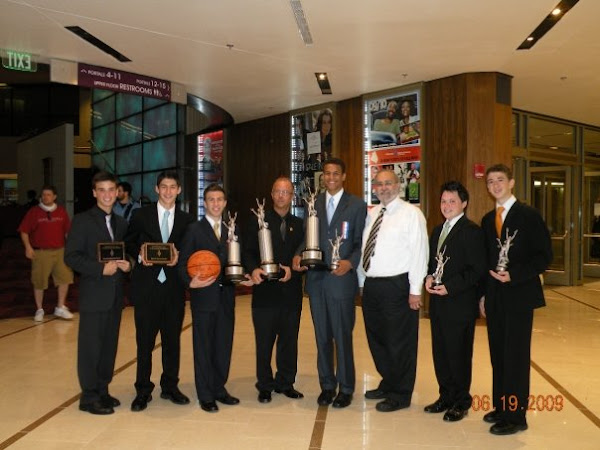Monday, July 27, 2009
RATE: GO SPEED RACER, GO!
VOLUME: TALK TO THE TREES
TONE: DON'T USE THAT TONE OF VOICE,.YOUNG MAN
If I had a quarter for every time my mother said this to me, I could have retired by my senior year of high school.
The tone we take when saying what we say, says more than the words themselves. And a speaker who does not make tonal choices generally goes ignored or is not taken seriously by audiences.
Tone. What is it? It's the mood behind the phrases we speak. It is what we are feeling, what midset we are in.
If I speak the phrase, "tell me more," I can say it with a variety of moods.
I can say it ANGRILY, if your baseball just smashed my windshield, after I warned you it would happen if you continued to play so close to my car.
I can say it SADLY, if someone is beginning to tell me a story about the death of an old friend of mine.
I can say it GLADLY, if I surmise that you are about to give me a promotion or if I'm glad that the school bully broke his arm
I can say it LASCIVIOUSLY, if I think you like me..a lot!
I can say it SARCASTICALLY if I really want you to stop talking about the matter.
AND SO ON.
You must decide, as you write, and before you speak, what tone you will project as you say each sentence of you presentation.
If you are reading from a script, you can write in the tone choices. If not, you need to remember them.
Wednesday, July 22, 2009
TUG OF WAR--eye contact, part eight
PLEASE VISIT JOHN BUETTLER'S BLOG--
Friday, July 17, 2009
WARM PUPPY-eye contact: part seven
WIDE AND NARROW--eye contact: part six
Wednesday, July 15, 2009
REEL 'EM IN-eye contact: part five
Tuesday, July 14, 2009
A CLOSER LOOK--eye contact: part four
WANDERING EYES--eye contact:part three
Sunday, July 12, 2009
EYE CONTACT: THE EYES HAVE IT--part two
Thursday, July 9, 2009
WHAT'S YOUR STATUS
Instantly, we recognize the status of others. He seems shy. She looks nervous. He carries himself like a celebrity. She has movie star quality. He acts like he can buy a small country.
Many of our relations are really status driven. I order my obedient underlings to do their jobs. He cowers in the presence of the beautiful girl.
And a good number of our issues with other people arise from one person's need to raise his/her status at the expense of another's losing status.
Lots more can be said about this, but as a speaker you want to give off HIGH STATUS SIGNALS, not LOW STATUS RED FLAGS.
Note the NO and Yes chart below.
NO--LOW STATUS PHYSICALITY
YES--HIGH STATUS PHYSICALITY
NO--moving head randomly --
YES--keeping head still
NO--darting eyes
YES--keeping eyes still --directing one phrase to one person’s eyes--changing expression when moving to another’s eyes
NO--looking at empty spaces
YES--looking at people
NO--obsessing with notes
YES--looking down sparingly at notes, if permitted
NO--moving body jerkily
YES--moving body smoothly
NO--not using gestures
YES--using box, grapefruit, recreatives (more later)
NO--not completing gestures
YES--extending them out, holding them still, returning them smoothly (w/o wagging and dangling) --gesturing above the waist
NO--slumped posture
YES--erect but comfortable posture
NO--unsteady stance: NO--swaying, shifting weight, rocking, twisting
YES--steady stance (being still is good)
NO--frozen positioning
YES--facile movement during transitions in the speech
NO--blank look
YES--smile, facial expressions; eyes thinking
NO--unconcerned about feedback
YES--concerned about audience reaction and Comprehension/appreciation; adaptation
NO--un-combed, unkempt hair
YES--neatly styled hair that says I mean business; hair away from eyes
NO--not “packaged” before walking up: no visibly emptying pockets, adjusting clothing, combing hair
YES--ready to seize the stage
NO--unprofessional visuals
YES--professional visuals
NO--LOW STATUS VOCALS
YES--HIGH STATUS VOCALS
NO--no contrast in pitch, volume, rate, phrasing
YES--meaningful contrast
NO--fuzzy articulation
YES--clear articulation
NO--lack of emphasis of pivotal words
YES--emphasis of pivotal words
NO--inaudibility
YES--clear projection
NO--memorized sound
YES--conversational, friendly sound
NO--low energy
YES--high energy: enthusiastic, passionate
NO--no Tonal meaning behind the words
YES--subtextual tonal meaning behind the words, a clear indication of emotion, feeling, thoughts, memories, desires

